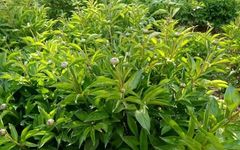Disease Inquiry, Health Guidance, Classic Health Preservation, Traditional Chinese Medicine and Herbs, No Need to Seek Help When Sick
Bai Shao (白芍) is the dried root of the plant Paeonia lactiflora Pall. from the family Ranunculaceae. It is harvested in summer and autumn, cleaned, with the head, tail, and fine roots removed, boiled in water, and then the outer skin is removed or peeled before boiling again, and finally dried.
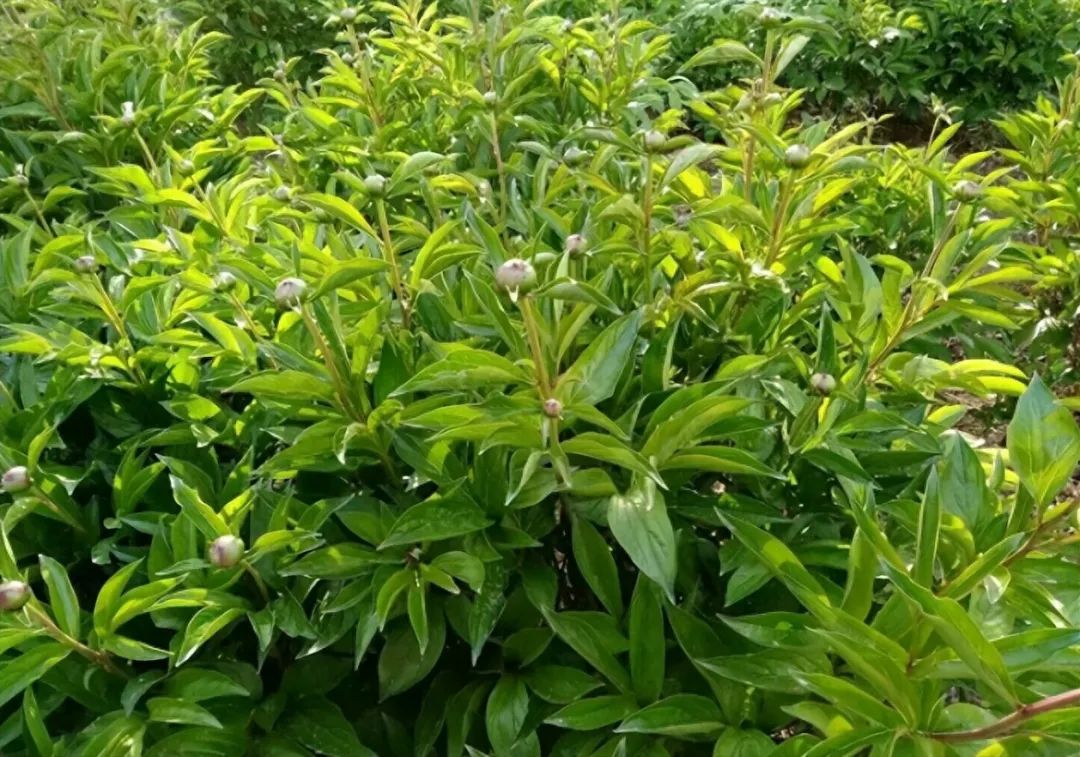
Bai Shao Plant
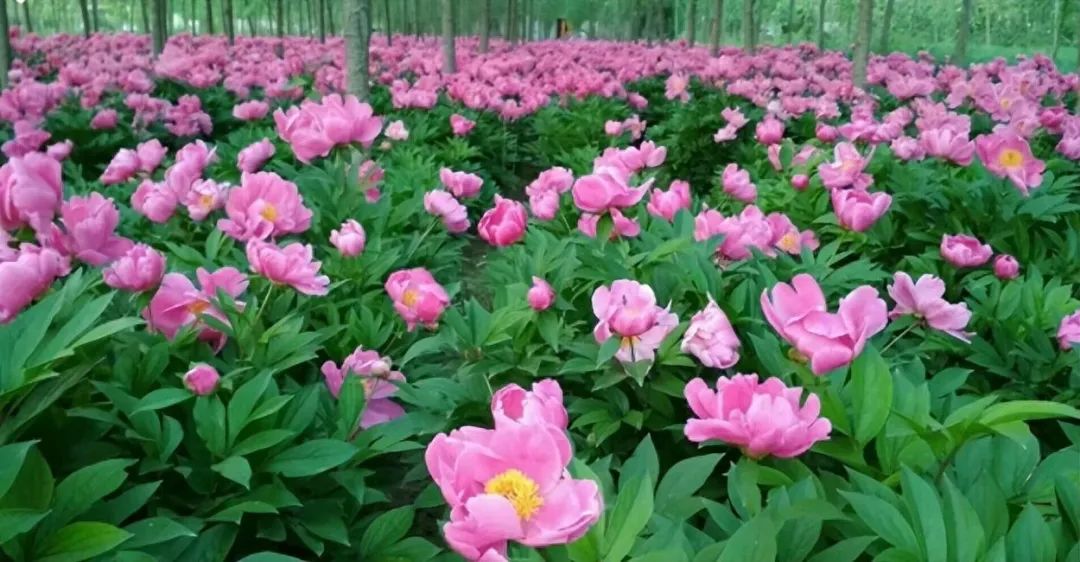
Bai Shao Plant
【Characteristics】 The product is cylindrical, straight or slightly curved, with flat ends, measuring 5 to 18 cm in length and 1 to 2.5 cm in diameter. The surface is whitish or light brownish-red, smooth or with longitudinal wrinkles and fine root marks, occasionally with remnants of brownish outer skin. It is solid, not easily broken, with a relatively flat cross-section, whitish or slightly brownish, with distinct growth rings and radiating rays. It has a faint aroma and a slightly bitter, sour taste.
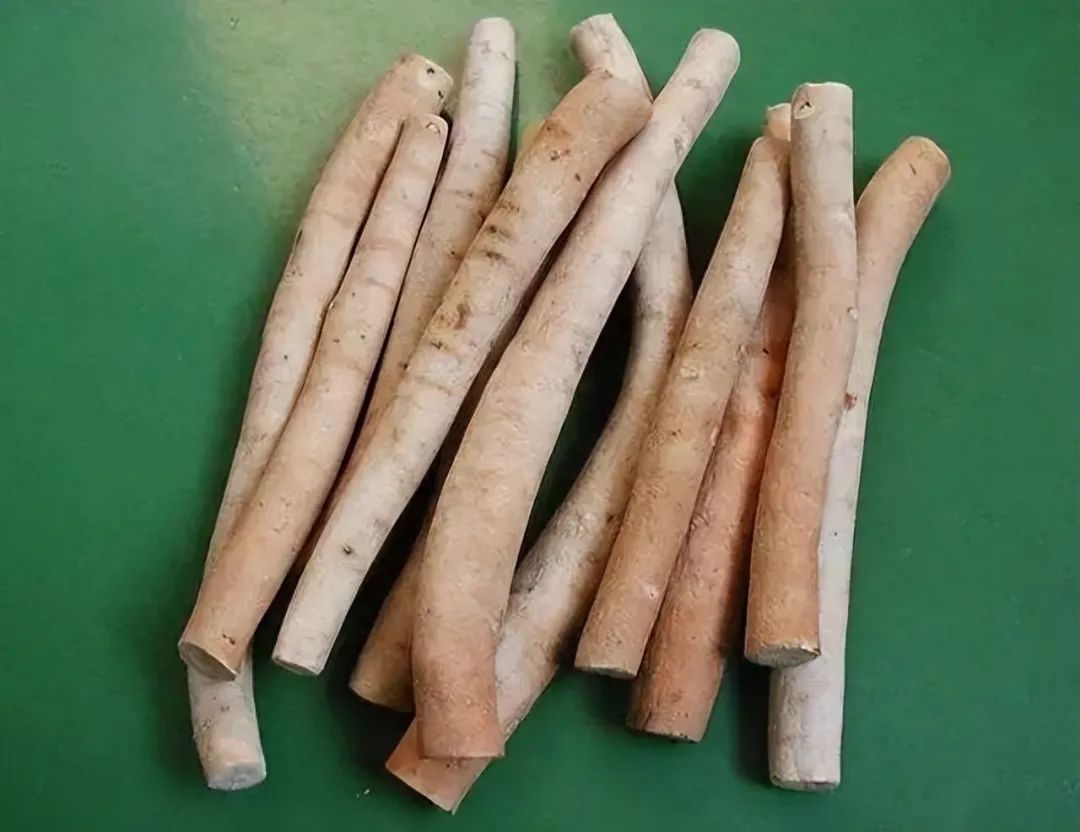
Bai Shao Medicinal Material
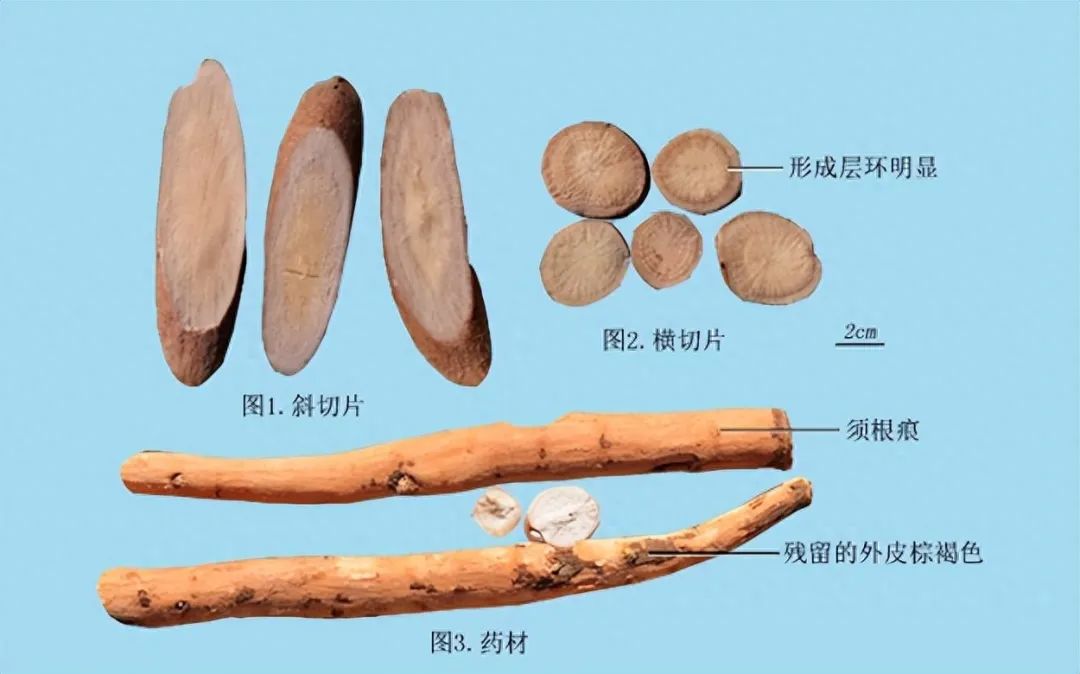
Bai Shao Identification
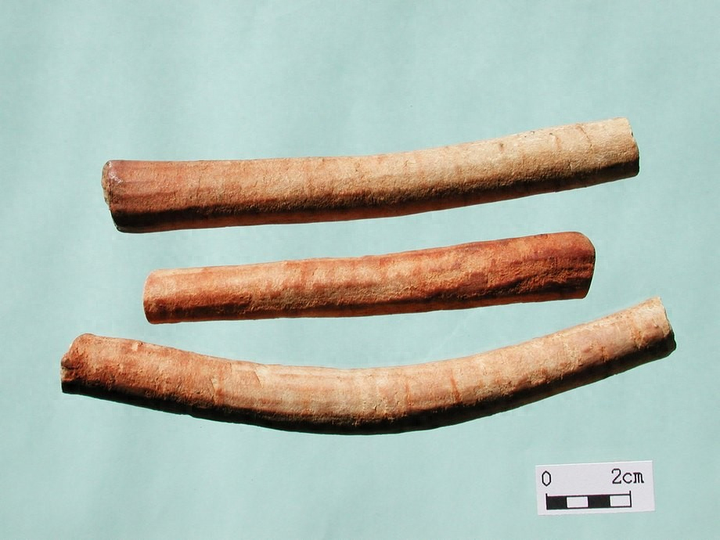
Bo Bai Shao
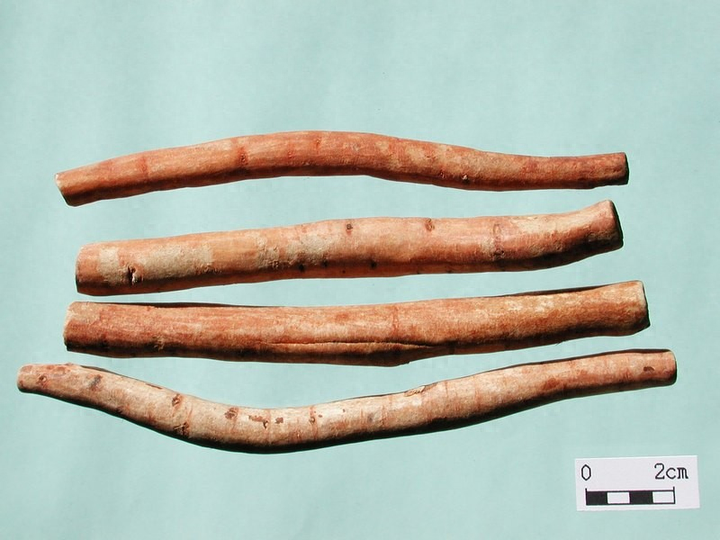
Chuan Bai Shao
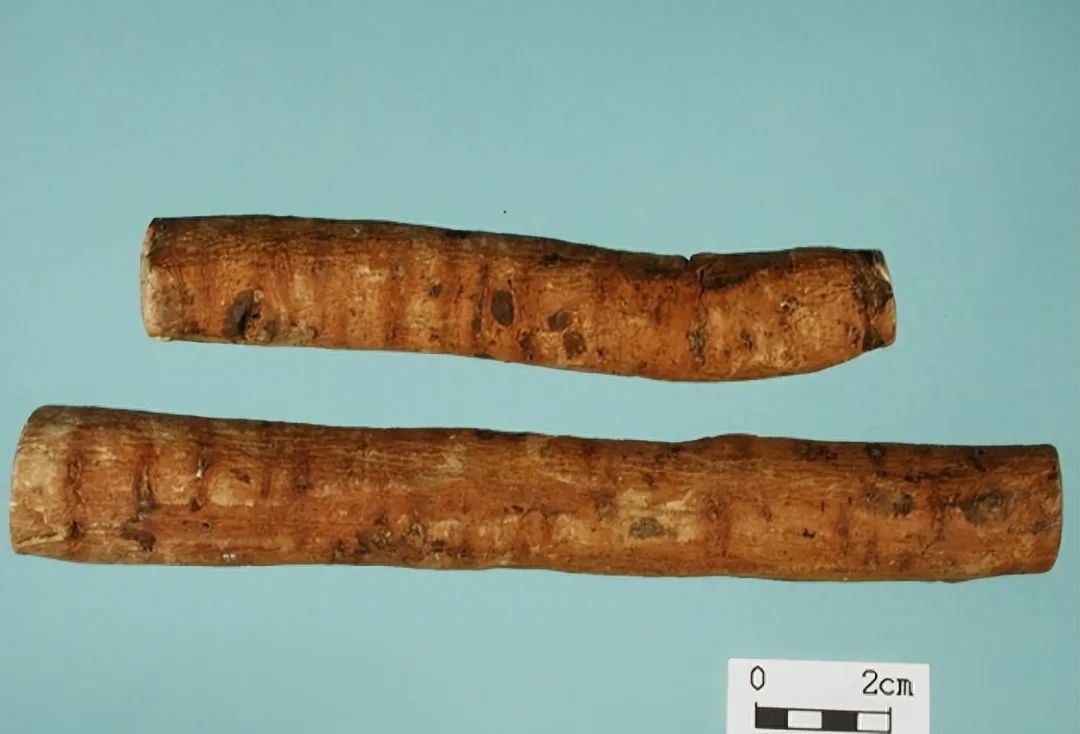
Hang Bai Shao
True Bai Shao: The dried root appears cylindrical, uniform in thickness and straight, measuring 10 to 20 cm in length and 1 to 1.8 cm in diameter, with a relatively flat surface, or with obvious longitudinal wrinkles and root marks, light reddish-brown or pale white, with brownish spots where the cork has not been completely removed, occasionally showing transverse pores; it is solid and heavy, not easily broken, with a cross-section that is grayish-white or slightly brown, and the wood part has a radiating pattern resembling a chrysanthemum heart; it has no aroma and a slightly bitter and sour taste.
Fake Bai Shao (Mao Guo Shao Yao): The dried root often appears elongated, thicker at one end and thinner at the other, with uneven ends, brownish outer skin; although it is hard and heavy, it is not easily broken, but the cross-section lacks the chrysanthemum heart feature, and the cross-section is powdery; it has a faint aroma and a slightly bitter and sweet taste.
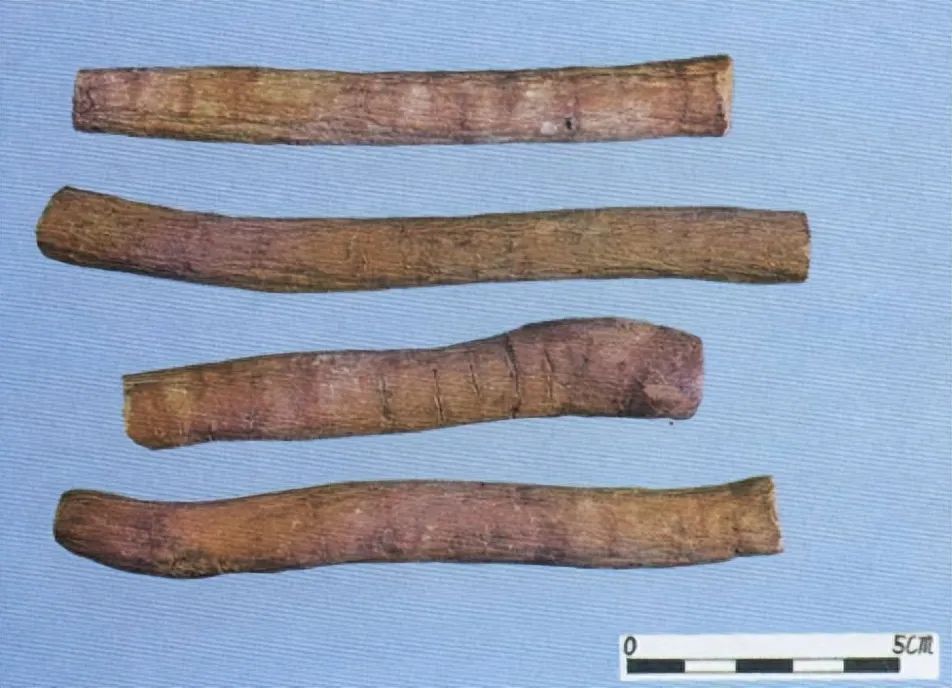
Mao Guo Shao Yao
Fake Yun Bai Shao: The dried roots of the plants Paeonia delavayi Franch. and its varieties are cylindrical, measuring 10 to 18 cm in length and 1 to 2.5 cm in diameter. Both ends are flat, with a grayish-yellow to brownish-yellow exterior, with distinct longitudinal wrinkles and root marks. It is solid, not easily broken, with a cross-section that is not very flat, light yellow, slightly corky, and the wood part has a radiating pattern. It has a faint fragrance and a slightly bitter and sour taste.
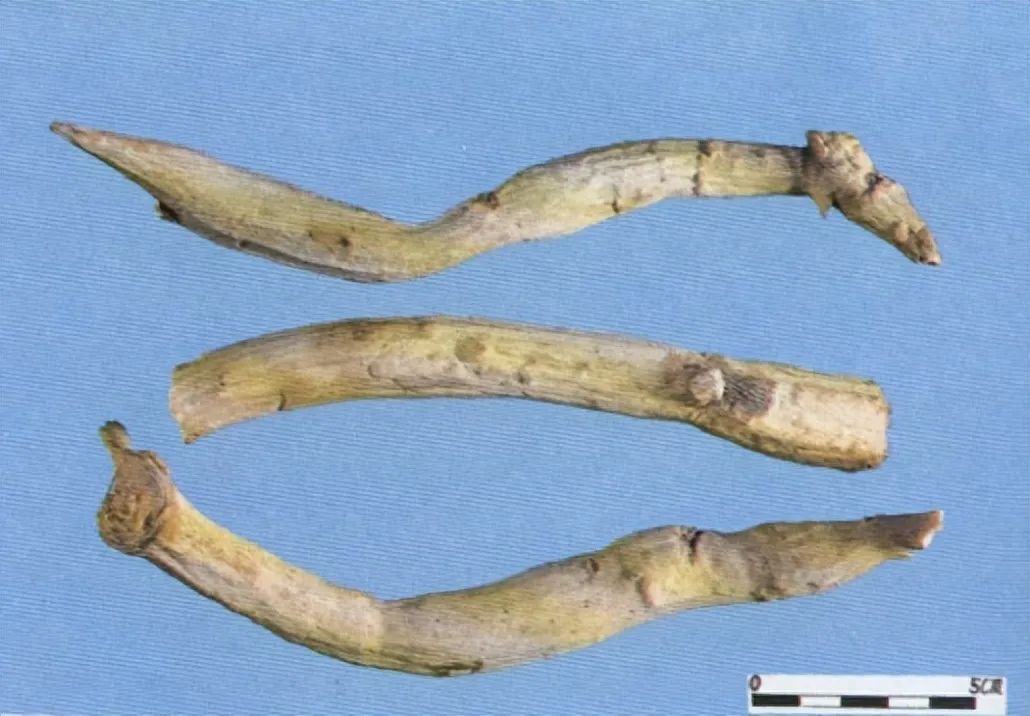
Yun Bai Shao
【Preparation】 Bai Shao is cleaned, soaked, sliced thinly, and dried.
【Characteristics】 The product appears as thin, round slices. The surface is light brownish-yellow or whitish. The cross-section is slightly brownish or whitish, with distinct growth rings, and slightly raised vein patterns arranged radially. It has a faint aroma and a slightly bitter and sour taste.
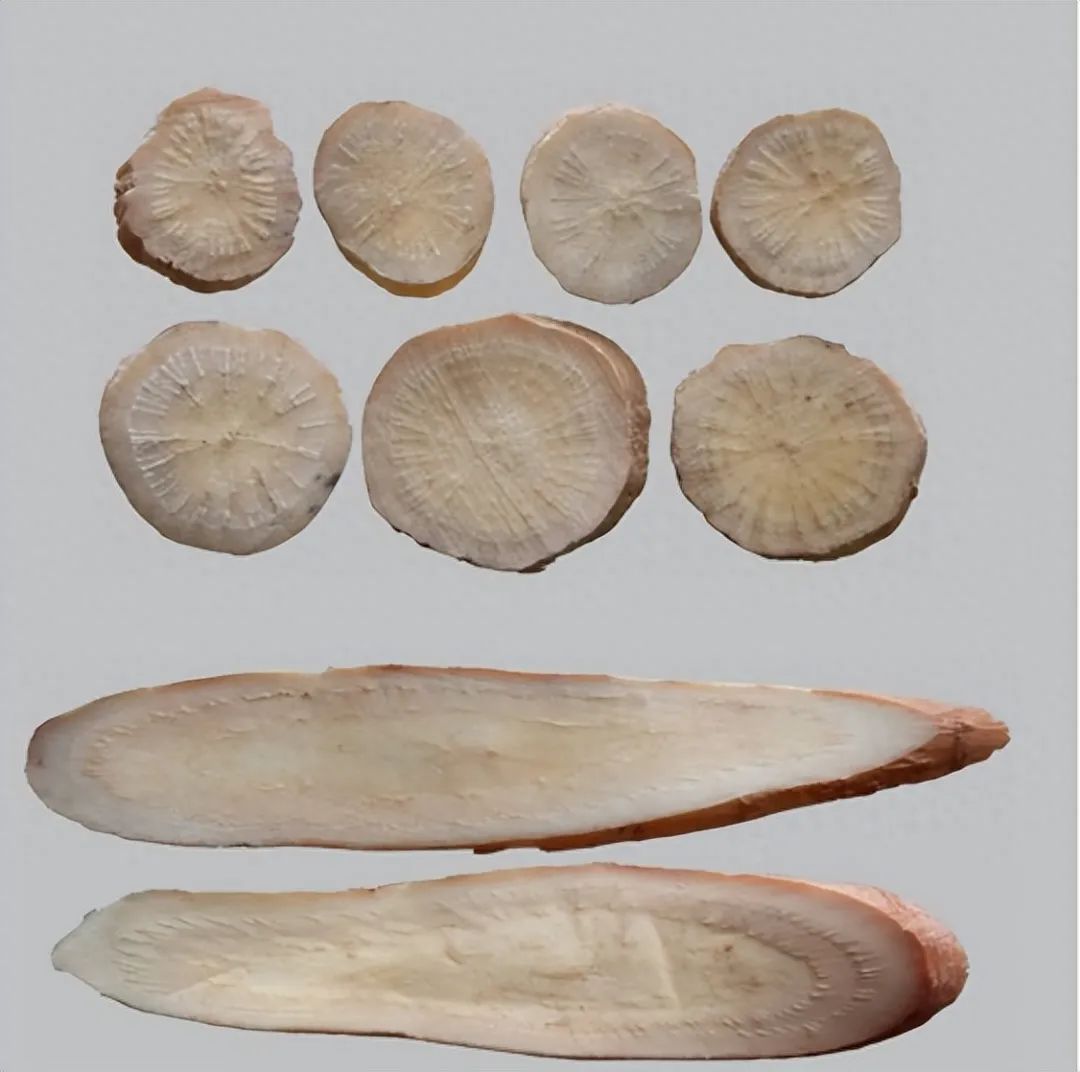
Bai Shao Slices
Stir-fried Bai Shao Take clean Bai Shao slices and stir-fry until slightly yellow.
【Characteristics】 The product resembles Bai Shao slices, with a slightly yellow or light brownish-yellow surface, some may show scorched spots. It has a faint fragrance.
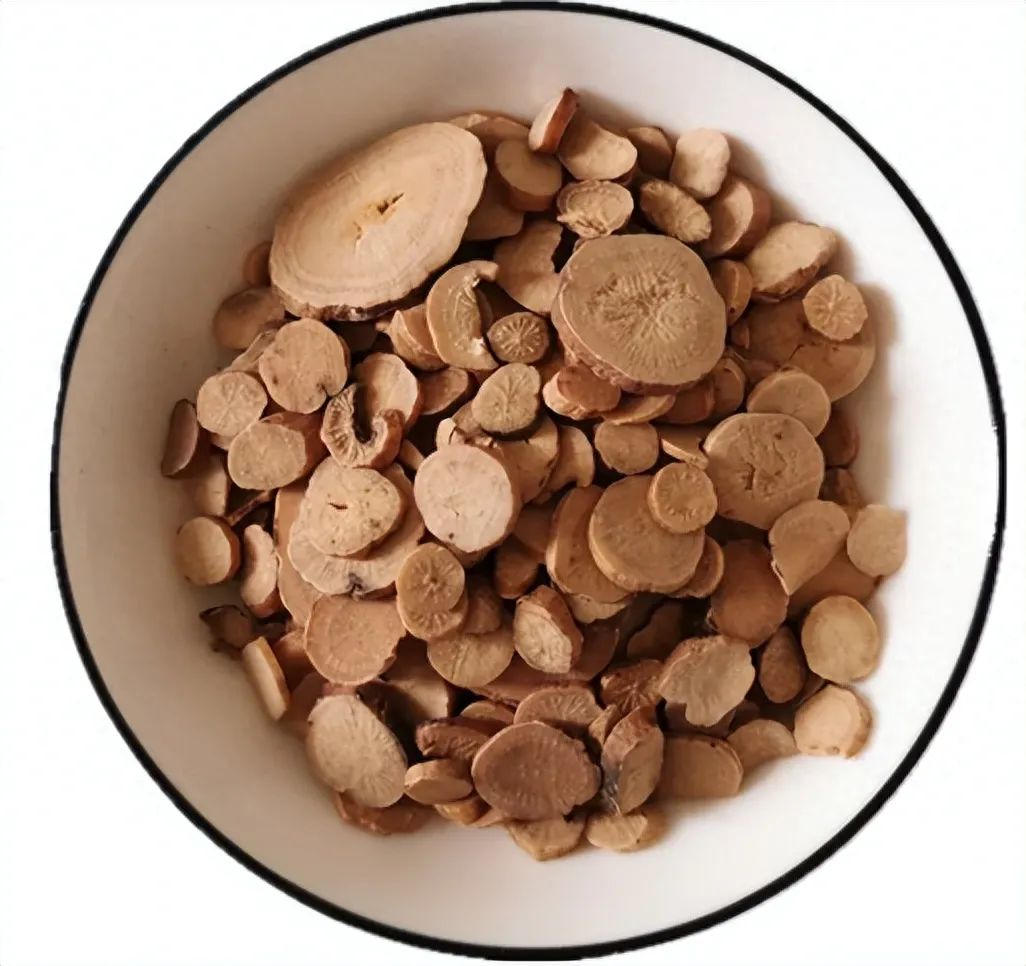
Stir-fried Bai Shao
Wine-fried Bai Shao Take clean Bai Shao slices and stir-fry with wine until slightly yellow.
【Characteristics】 The product resembles Bai Shao slices, with a slightly yellow or light brownish-yellow surface, some may show scorched spots. It has a faint wine aroma.
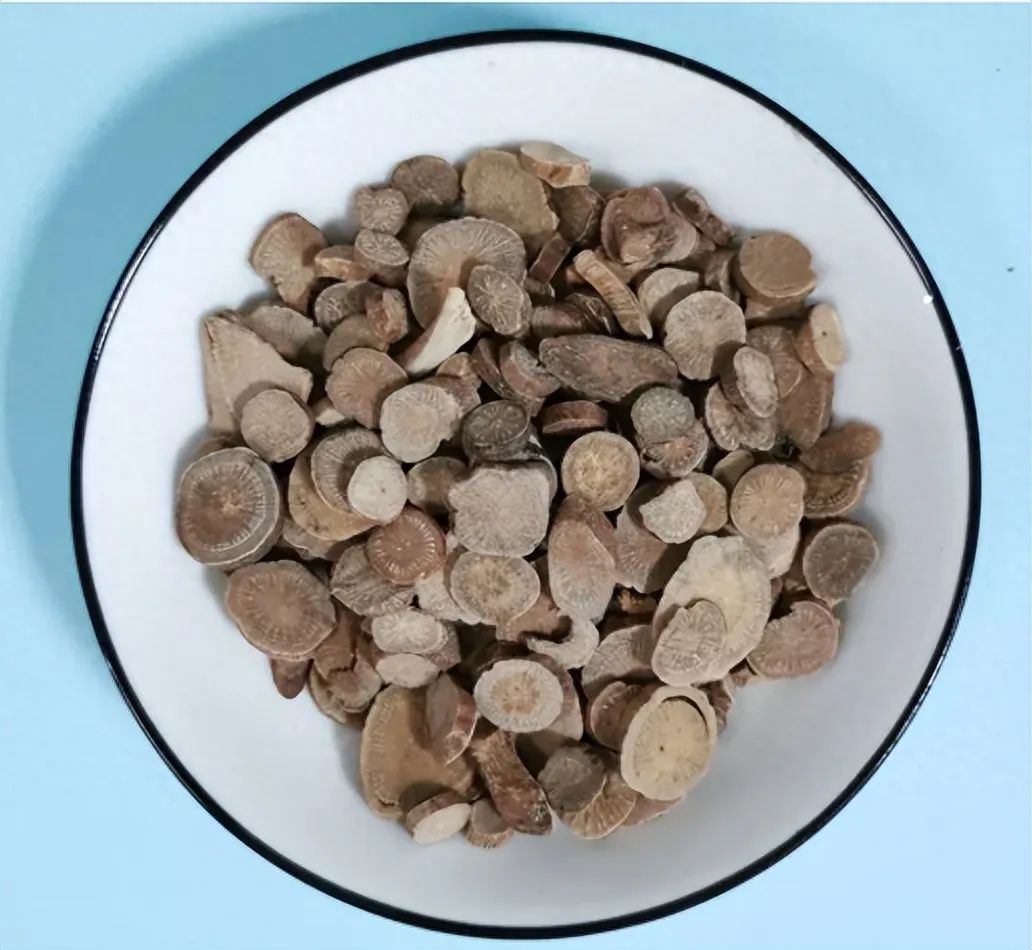
Wine-fried Bai Shao
【Chemical Components】
This product contains paeoniflorin, hydroxypaeoniflorin, benzoylpaeoniflorin, paeonol glycoside, oxidized paeoniflorin, white peony glycoside, ivy saponin aglycone, paeoniflorin ketone, gallic acid paeoniflorin, kaempferol-3,7-di-O-β-D-glucoside, carotenoid, β-sitosterol, and paeonolactone, with volatile oils mainly containing benzoic acid and paeonol.
【Pharmacological Effects】
(1) Effects on the cardiovascular system: Bai Shao has the effect of dilating coronary arteries and lowering blood pressure.
(2) Liver protection: Bai Shao has a significant protective effect against liver damage caused by carbon tetrachloride, aflatoxin B1, and D-galactosamine.
(3) Antispasmodic effect: The main component of Bai Shao, paeoniflorin, has a good antispasmodic effect. Bai Shao inhibits intestinal and gastric motility and significantly counteracts uterine contractions induced by oxytocin.
(4) Analgesic effect: Bai Shao has a significant analgesic effect on acetic acid-induced writhing response, and when combined with the methanol complex of licorice, they have a synergistic analgesic effect on acetic acid-induced writhing response.
(5) Antibacterial effect.
【Flavor and Meridian Entry】 Bitter, sour, slightly cold. Enters the liver and spleen meridians.
【Functions and Indications】 Nourishes blood, regulates menstruation, restrains yin and stops sweating, softens the liver and alleviates pain, and pacifies liver yang. Used for blood deficiency with sallow complexion, irregular menstruation, spontaneous sweating, night sweats, flank pain, abdominal pain, limb cramps, headache, and dizziness.
【Dosage】 6 to 15 g.
【Precautions】 Should not be used with Rhizoma et Radix Rhei.
【Storage】 Store in a dry place, protect from pests.
Note: This article is for reference only; specific treatment and medication should follow medical advice! This public account is only for academic exchange.To learn more about Traditional Chinese Medicine, medicinal herbs, and folk remedies, ▼ Click the card below ▼ to inquire!
For example: low back pain, gynecology, andrology, kidney tonification, lumbar disc herniation, back pain, leg pain, knee pain, cervical spondylosis, liver disease, stomach disease, constipation, frequent urination, diarrhea, abdominal protrusion, dysmenorrhea, breast hyperplasia, postpartum care, acne, white hair, hair loss, skin diseases, age spots, aging, yin deficiency, cold, cough, fever, insomnia, stones, pharyngitis, sore throat, headache, toothache, snoring, oral ulcers, bad breath, rhinitis, tinnitus, eye diseases, thyroid issues, dandruff, athlete’s foot, hemorrhoids, cold hands and feet, rheumatism, night sweats, cerebral hemorrhage, hypertension, diabetes, asthma, heart disease, cardiovascular diseases, fatty liver, gout, dementia, varicose veins, qi tonification, blood tonification, calcium supplementation, weakness, obesity, pediatric diseases, slim legs, slim waist, dampness, spleen strengthening, hiccups, body odor, cramps, smoking cessation, meridians, Chinese patent medicines, foot baths… and more.
Thank you for sharing and clicking to see, may good fortune continue!

